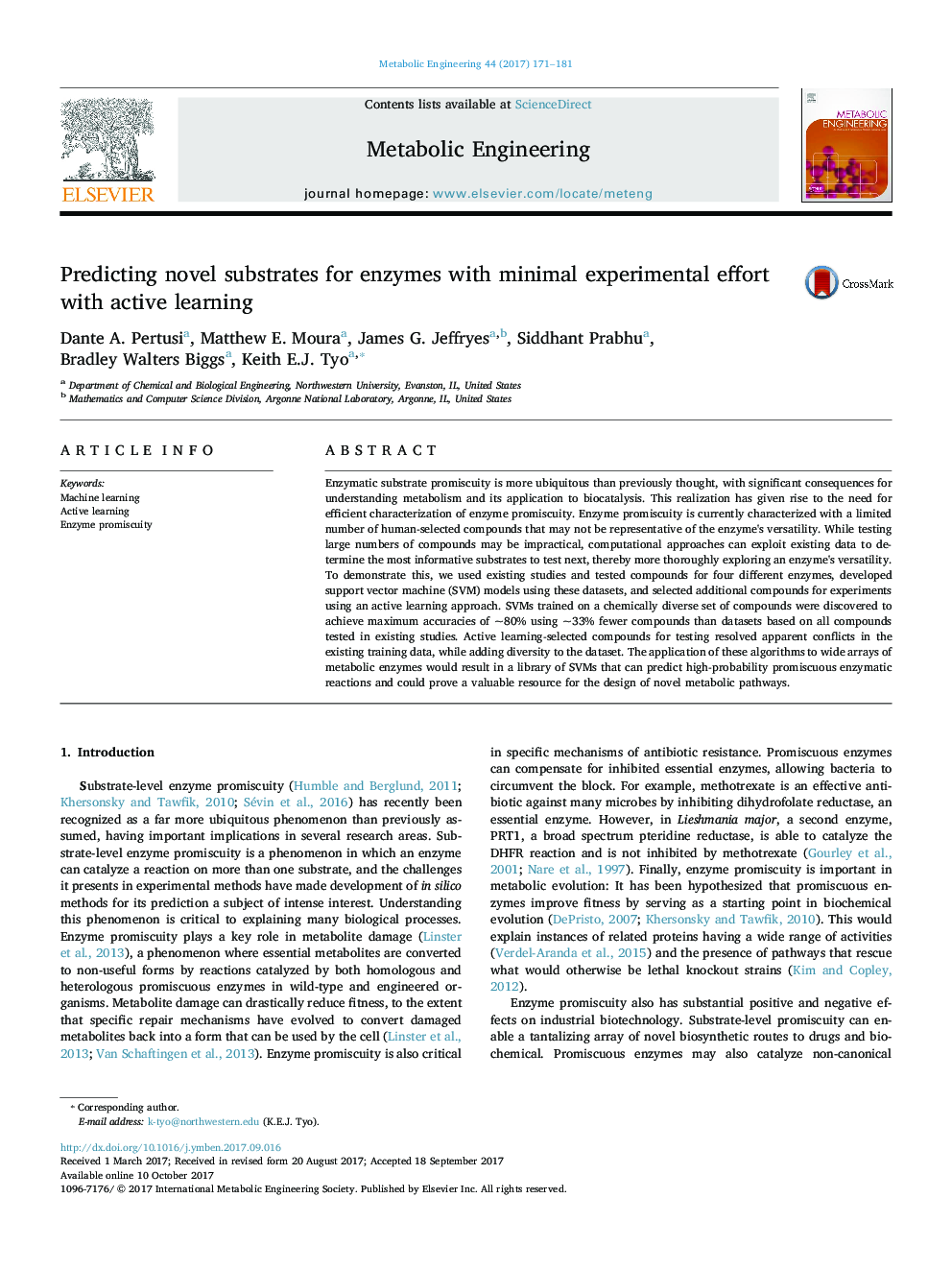| کد مقاله | کد نشریه | سال انتشار | مقاله انگلیسی | نسخه تمام متن |
|---|---|---|---|---|
| 6452651 | 1418335 | 2017 | 11 صفحه PDF | دانلود رایگان |
- An algorithm for prioritizing experiments for enzyme promiscuity is proposed.
- The algorithm (SimAL) utilizes cheminformatics and support vector machine learning.
- SimAL can predict an enzyme's promiscuity with 33% less experimental observations.
- SimAL judiciously resolve apparent conflicts in existing data in compound selection.
- Improvement in SimAL predictive power is experimentally validated.
Enzymatic substrate promiscuity is more ubiquitous than previously thought, with significant consequences for understanding metabolism and its application to biocatalysis. This realization has given rise to the need for efficient characterization of enzyme promiscuity. Enzyme promiscuity is currently characterized with a limited number of human-selected compounds that may not be representative of the enzyme's versatility. While testing large numbers of compounds may be impractical, computational approaches can exploit existing data to determine the most informative substrates to test next, thereby more thoroughly exploring an enzyme's versatility. To demonstrate this, we used existing studies and tested compounds for four different enzymes, developed support vector machine (SVM) models using these datasets, and selected additional compounds for experiments using an active learning approach. SVMs trained on a chemically diverse set of compounds were discovered to achieve maximum accuracies of ~80% using ~33% fewer compounds than datasets based on all compounds tested in existing studies. Active learning-selected compounds for testing resolved apparent conflicts in the existing training data, while adding diversity to the dataset. The application of these algorithms to wide arrays of metabolic enzymes would result in a library of SVMs that can predict high-probability promiscuous enzymatic reactions and could prove a valuable resource for the design of novel metabolic pathways.
Journal: Metabolic Engineering - Volume 44, November 2017, Pages 171-181
